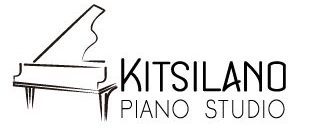Before starting piano lessons, some musicians go through music theory lessons. These lessons are where they learn to decipher a score. In particular, they learn concepts such as harmony, staff, clefs, tempo, rhythm, musical notation, counterpoint, key signatures, and much more.
Reading a score means deciphering all the symbols that compose it and being able to concretize them on a keyboard or a piano.
Well, where to begin?
There are several steps to fully understand a score. Most musicians start by reading the score as a whole, without trying to play the piece of music on the piano.
It is then a question of having an idea of the difficulty of the piece and why not imagine the melody in the head.
Subsequently, the reading continues to deepen your understanding of the score as you decipher more and more notations. You have to be able to spot difficult passages and compartmentalize the song. Because indeed, a piece of music is worked little by little. It is very hard to master a song in a few hours. Separating work into stages makes learning easier.
The next steps in reading a score are about rhythm, melody, and harmony. While the rhythm concerns the note values, the melody is usually formed by the notes of the highest register.
How to learn to read a piano score?
Reading a piano score is good, but you need to learn the meaning of all the symbols that compose it (musical notes, flat, sharp, treble clef, bass clef).
So how do you learn to read piano sheet music?
Learning to play the piano can be done alone or accompanied by a music teacher. Whatever it is, it is possible in both cases to learn to decipher these famous scores. Choosing to learn with a teacher allows you to quickly understand how the score works and especially to benefit from exercises adapted to your progress.
This is something not always obvious when you learn music theory at home alone. In both cases, you have to learn the basics to understand how to use music theory to play the piano.
It is first necessary to work on the rhythm. This is what gives meaning to the score and a continuation in the piece. Imagine if the notes were all one second long. Then there would be no “language of music.”
The rhythm is therefore part of the character of the piece. It is important to work hard on the rhythm. For this, several exercises exist. Ask your teacher for advice. Reading a piano score is not easy, but if you have a proficient teacher by your side, then you will be able to learn the intricacies of the piano rather quickly. Other lessons are also important such as learning notes through musical dictations or learning to follow the tempo through a metronome. You can learn everything about a piano by taking lessons from a professional and experienced piano teacher.
